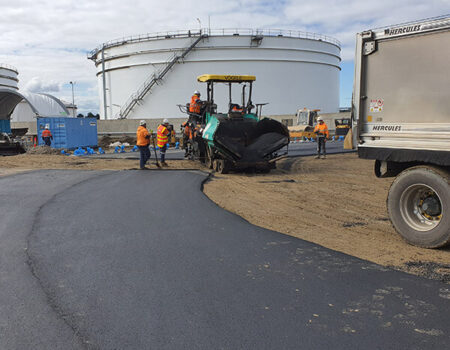Asphalt / Bitumen Roads
Asphalt Concrete is a mixture of mineral aggregates and natural sand held together with a binder (glue) of Bitumen.

The advantage of using bitumen instead of say cement to make concrete is that resultant asphalt concrete remains flexible, allowing it to move with the underlying pavement and or traffic it is exposed to.
Asphalt is manufactured at a batching plant to produce a homogeneous mix and is placed, either by hand or machine and compacted to a dense matt. Although used as a trafficable wearing surface – Asphalt at greater depths does have some inherent strength of its own and can be used to correct or regulate the shape a new surface prior to a final overlay.
If asphalt is placed in too thin a layer it will not have enough strength to support any load. The final finish of an asphalt surface is a smooth matt finish, however there can be differences in the appearance between areas upon close inspection. Asphalt contains various sizes of aggregates, sand, bitumen and other ingredients which can cause a varied texture on the surface. In addition, asphalt areas that have been raked and spread with hand tools may appear different in texture from those spread by machine.
Although every effort is made to avoid any surface irregularities, some small puddles can form when wet, depending on the natural slope and drainage of your ground
Asphalt can remain relatively soft for up to 12 months. Even once cured, do not expect it to be as hard as concrete. An asphalt surface will soften and harden as temperatures rise and fall. Although it is not required, you can use cool water from the hose to cause the driveway to harden for particular loads in Melbourne.

